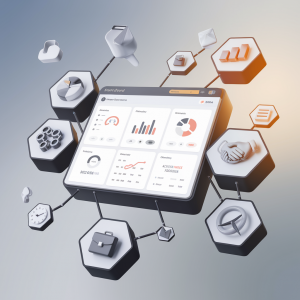Implementing an Enterprise Resource Planning (ERP) system can be a game-changer for professional services firms looking to streamline operations, enhance productivity, and drive sustainable growth. This comprehensive guide walks you through a strategic, step-by-step approach to ERP implementation that minimizes risks and maximizes return on investment.
Why ERP Implementation Matters for Professional Services
In today’s competitive business landscape, professional services firms need robust technological solutions that can:
- Optimize project management workflows
- Enhance financial tracking and reporting
- Improve resource allocation
- Increase overall operational efficiency
1. Strategic Planning and Requirements Analysis
Laying the Groundwork for ERP Success
Objective Setting
Before diving into ERP selection, conduct a comprehensive internal audit:
- Perform a detailed assessment of current business processes
- Identify operational bottlenecks and inefficiencies
- Define clear, measurable objectives for your ERP system
Stakeholder Alignment
Successful ERP implementation is a collaborative effort:
- Engage stakeholders from every department
- Document comprehensive requirements
- Create a cross-functional implementation team
- Develop a detailed project roadmap with realistic timelines and budgets
2. Selecting the Right ERP Solution
Navigating the ERP Landscape
Choosing Your Perfect ERP Match
Not all ERP systems are created equal. Consider these critical factors:
- Industry-specific functionality
- Scalability and future-proofing
- Customization capabilities
- Cloud vs. on-premise solutions
- Total cost of ownership
Pro Tip: For professional services firms, prioritize ERP systems with robust project tracking, multiple billing rate support, and advanced resource management features.
3. Data Migration Strategy
Ensuring a Smooth Transition
Data Preparation is Key
A meticulous data migration approach prevents costly errors:
- Conduct a comprehensive data audit
- Cleanse and validate existing data
- Develop a phased migration strategy
- Utilize automated migration tools
- Maintain rigorous data integrity checks
4. Comprehensive Testing
Minimizing Risks, Maximizing Performance
Systematic Validation
- Create a controlled testing environment (sandbox)
- Perform extensive functionality testing
- Validate data integrity
- Conduct user acceptance testing
- Gather and incorporate user feedback
5. Training and Change Management
Empowering Your Team for Success
Building a Culture of Technological Adoption
- Develop role-specific training programs
- Offer multiple learning formats (workshops, video tutorials, hands-on sessions)
- Create ongoing support mechanisms
- Foster a positive attitude toward technological change
6. Seamless Go-Live and Implementation
Executing Your ERP Rollout
Strategic Deployment
- Choose between phased or full-scale implementation
- Maintain open communication channels
- Provide immediate technical support
- Monitor system performance closely
- Be prepared to make rapid adjustments
7. Continuous Improvement
Evolving with Your ERP System
Post-Implementation Excellence
- Conduct regular performance reviews
- Stay updated on new system features
- Gather continuous user feedback
- Plan for periodic system upgrades
- Maintain a flexible, adaptive approach
Conclusion: Your Path to ERP Excellence
Implementing an ERP system is not just a technological upgrade—it’s a strategic transformation. By following this comprehensive guide, professional services firms can navigate the complexities of ERP implementation, driving operational efficiency and positioning themselves for sustainable growth.
Ready to Transform Your Business?
Consult with ERP implementation experts who understand the unique challenges of professional services firms. Your journey to operational excellence starts here.




